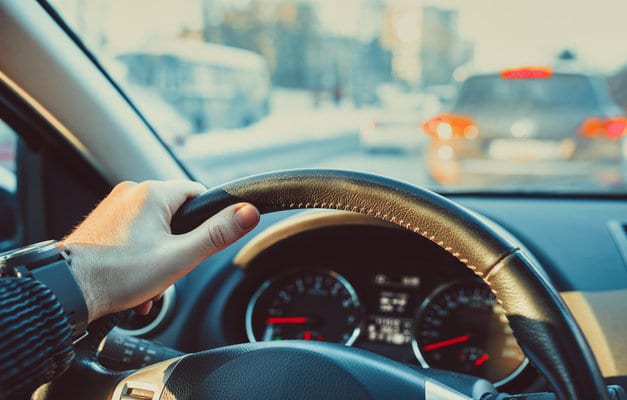
Why does the car go right (left) and how to fix it?
Content
Driving the car to the side is a consequence, behind which lies many factors, including the technical condition of the car and the road surface. The problem immediately manifests itself as soon as the driver releases the steering wheel or relieves the effort on it. This problem requires a prompt solution, otherwise all sorts of troubles associated with the resource of suspension parts and loss of control over the car are expected.
Reasons for deviation from rectilinear motion
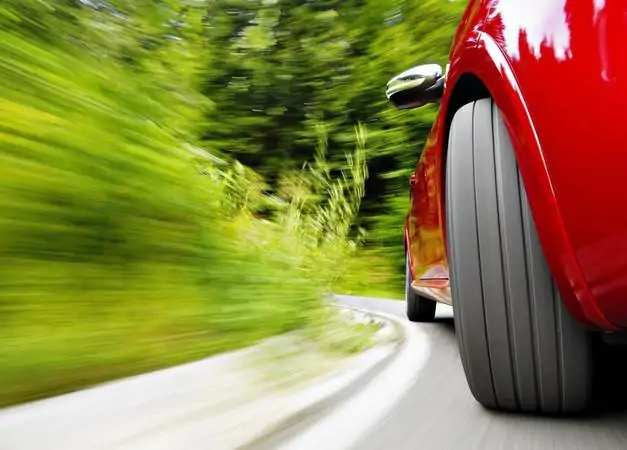
If the car leads to the side, you should evaluate the condition of the road surface (there may be a track on the road under which the wheel adjusts), or the problem is in the details of the suspension, steering or brakes. We will analyze each of the reasons.
Different tire pressure
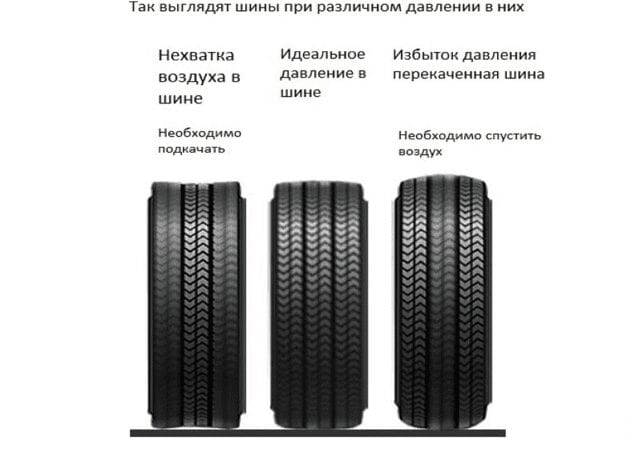
The tire pressure should be the same for one axle. The manufacturer indicates the recommended indicators, taking into account the size of the wheels and the degree of load. When driving, the vehicle will pull to the side if the difference in tire pressure is more than 0.5 atmospheres. With insufficient pressure of one wheel, the car leads to the side of a lowered wheel. Why it happens?
Take three wheels, pump them with different pressure:
- 1 atmosphere (insufficient pressure) - tire wear occurs on the outside of the tread
- 2.2-2.5 atmospheres (normal pressure) - uniform tread wear
- 3 or more atmospheres (excess air) - the tread wears out in the center.
Based on the above, it follows that the difference in the contact spot between the wheels directly affects the trajectory of movement.
Tie Rod End Wear
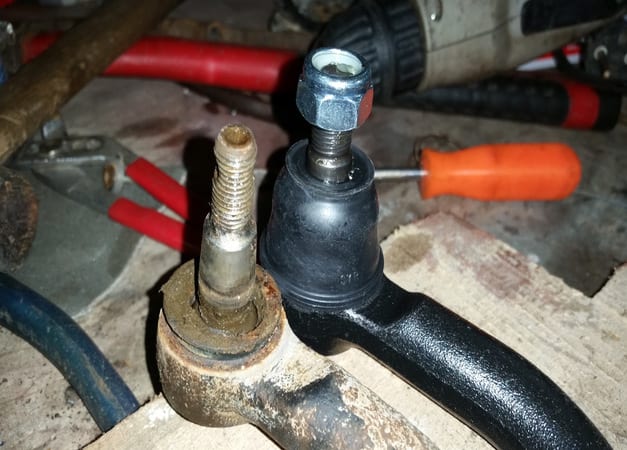
The steering tip is a ball joint connecting the steering rack and the steering knuckle of the wheel. If the tip is worn, it creates a backlash (free play of the trunnion), and the car pulls to the side. After replacing the part, it is necessary to adjust the alignment, after which the problem will disappear.
Rubber wear
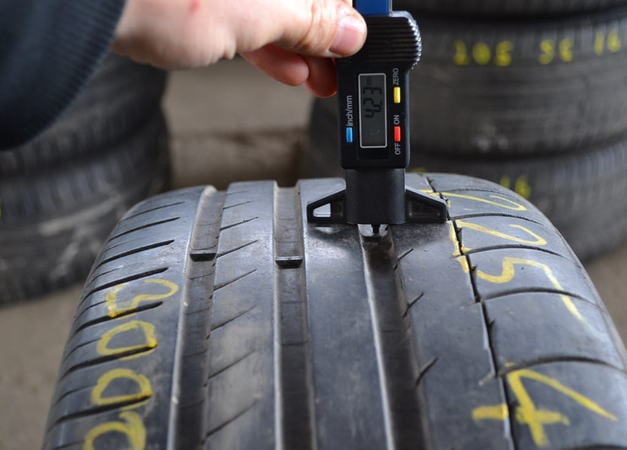
A tire has the ability to wear out and to deform. The more and more uniform the tread wear, the greater the likelihood that the car will be pulled around. The tire tread has a working surface, with a minimum residue they need to be replaced both on the axis.
Hub bearing wear
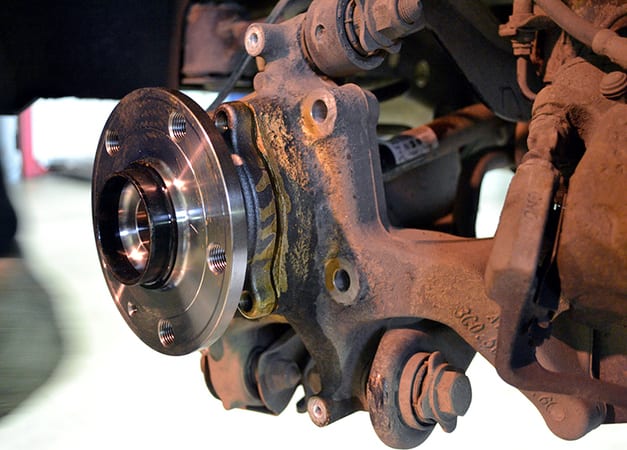
A malfunction is detected by ear when the car is moving, or by scrolling the posted wheel. When worn, the bearing makes it difficult to rotate the wheel, creating a play that is felt at a speed of 50 km / h. A defective bearing does not provide a linear motion of the wheel, due to which the machine will go to the side. Depending on the design of the suspension, the hub bearing can be changed separately, or assembled with the hub.
Wheel alignment violation
The correct camber and toe angle ensures straight-line movement and uniform wear on tires and suspension parts. Wheel alignment angles are violated for the following reasons:
- strong breakdown of the suspension;
- running gear repair;
- deformation of the lever, beam, tie rod and tip.
After visiting the wheel alignment stand, the car will no longer pull to the side.
Violation of the integrity of the body
The deformation of the body or frame occurs due to damage to the power elements of the body structure, as well as after poor-quality body repair. It also affects the age of the car (metal fatigue). If the suspension is working, the tires are also in good condition, this directly indicates the deformation of the subframe or side members.
Why is the car pulling to the side when accelerating?
The peculiarity of most front-wheel drive cars is that the transmission axles are different in length, the right axle is longer, because of which, when you press the gas sharply, the car will tend to the right.
Backlash in steering components
If you look at the front wheels from above, then their front part will be slightly directed inward. This is the right angle of convergence, because when you set speed, the wheels tend to go out, and with a working steering gear, they look straight ahead. In the steering, ball joints of the rods are used, which contribute to the rotation of the wheels. In the steering rack or gearbox, the worm shaft is subject to wear, which provokes a backlash of the entire steering system. Because of this, the wheels oscillate, and the car starts to drive left and right.
Changing the angle of the axis
A similar problem is rare and on high runs. When the differential gears wear, the torque on the axle shaft is transmitted with a big difference, respectively, the less loaded side leads the car in its direction.
The same happens when the differential lock clutch malfunctions, which is especially dangerous when cornering at high speed - the car will go into an uncontrolled skid.
The car pulls to the side when braking
The most common problem is when the vehicle goes off track when braking. If your iron "horse" is not equipped with an ABS system, then when you press the brake pedal all wheels are blocked, the car will instantly take to the side.
The second reason is the wear of brake discs, pads and slave cylinders. Often there are failures in the electronics of the ABS unit, due to which the wrong pressure is distributed along the brake lines.
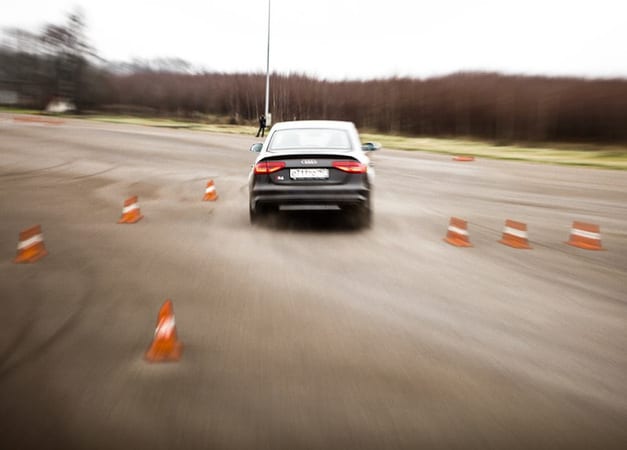

Problem with the brakes
Efficient and safe braking ensures that the selected track is maintained. In the event of a brake system malfunction, the car will divert to the side where the brake piston force is most. The main malfunctions:
- wear of brake discs and pads;
- leaky working cylinder, pressure loss in this circuit;
- failure of the rear axle brake force distributor;
- jamming the caliper.
Suspension problems
The more complex the suspension, the more pronounced are the malfunctions of the components, parts and mechanisms of the chassis, which directly affects the steering. List of faults:
- a spring sagged on one side or a shock absorber drip;
- the silent blocks of the front levers are torn;
- Inadmissible backlash of ball bearings;
- wear of silent blocks of a subframe or beam;
- failure of thrusters of silent blocks (rear suspension).
It is important to change the suspension parts equally on both sides, otherwise there is a risk that you will not get rid of the car leaving to the side when driving.
Why is the car pulling to the side when accelerating?
The main reason for this behavior of the car is a malfunction of the steering or the failure of some part of the chassis. Malfunctions of the braking system that affect the change in the trajectory of the car is manifested when coasting or decelerating (for example, one disc is clamped by the pads more strongly than the other).


As we have already discussed, there are many reasons for this behavior of the transport. They can be associated with improper tire inflation, bumps on the road (wider tires are more likely to slip out of a rut at high speeds), chassis or suspension breakdowns. In some cases, this effect is observed if one part of the machine is heavily loaded.
Here are the main reasons for the deviation of the car from the rectilinear movement:
| Reason: | Breakdown or malfunction: | Symptoms: | How to fix: |
| Increased backlash appeared in the steering. | Parts of the hydraulic booster are worn out; The steering rack is worn out; Tie rods or steering tips worn out | During acceleration, the car moves to the right, there may be a beating in the steering wheel. When driving in a straight line, the car starts to wag, and the steering loses its responsiveness. The steering rack knocks when the steering wheel is turned in an immovable vehicle. | Diagnose the steering mechanism, including the power steering. If necessary, parts must be replaced with new ones. |
| Car suspension malfunction. | Silent blocks have worn out their resource; In the stabilizer bushings, a working out has formed; Ball joints began to play; The springs of the struts are worn out; The axis angle has changed; Minor bearing wedge in the hub. | When the car picks up speed, it starts to pull and tilt to the side, during which squeaks can be heard, and the camber is normal. The car loses stability at high speeds. Longitudinal play in a suspended wheel. You need to make different efforts to turn in different directions. Strong heating of the hub and rim. | Diagnose the suspension geometry, adjust the alignment, replace worn parts with new ones. Check the castor on both sides of the car. |
| Transmission malfunctions. | A natural feature of cars with a transverse engine; The CV joint was worn out; Differential breakage. | If the suspension is in good condition, the car moves slightly to the right during the acceleration. When turning, the front wheels (or one wheel) give off a crunch (its strength depends on the degree of wear). A jacked up wheel turns hard. The car is pulled to the right when accelerating or decelerating. | Replace worn parts. |
Why pulls the steering wheel when you press the gas
Consider the reasons why the car deviates from the normal trajectory when the driver presses the accelerator pedal. Moreover, this does not depend on whether the swivel wheels are in a straight position or turned. In any case, a spontaneous change in the trajectory of a car is fraught with an accident.
Here are the reasons why you can pull the steering wheel to the side when you press the gas pedal:
- Incorrect tire pressure. If all wheels have excessively low or high air pressure, this will only affect tread wear. It is much worse when the pressure is different on the wheels on the same axle. In this case, the wheel with the larger contact patch will pull the car sideways due to the increased rolling resistance.
- Incorrect wheel alignment. The geometry of the car's suspension changes with impacts when the car hits a pit.
- Uneven rubber wear due to the driver not adjusting the suspension geometry for a long time.
- New rubber was installed, which, due to the peculiarities of the technical condition of the vehicle, did not get used. When installing new tires, the wheels must be balanced.
- Malfunctions in the steering mechanism. In no case should these problems be ignored, since at the most crucial moment the driver will not be able to control the car and will have a serious accident.
Some motorists notice that the car begins to behave incorrectly after a seasonal tire change. This happens when a wheel, for example, from the rear left axle hits the front right. Due to different wear (different load, pressure, etc.), it turns out that wheels with different treads are installed on the same axle, although the pattern is the same. To eliminate this effect, the driver can designate where a particular wheel is installed, so that during a subsequent replacement they do not confuse them.
Other causes of machine deviation
So, we have considered the most common reasons for a spontaneous deviation of a car from a given course in different road conditions. Of course, this is not a complete list of reasons. For example, the machine may deviate from straight-line movement due to the fact that after braking one of the pads did not move away from the disc. In this case, one wheel will rotate with great resistance, which, naturally, will affect the behavior of the vehicle.
Another factor that can significantly change the direction of a car when the steering wheels are in a straight line is the consequences of a serious accident. Depending on the degree of damage, the car body may deform, the geometry of the levers may change. If you are buying a used car, be sure to take a ride to identify the problem. In fact, in the secondary market, wrecked, hastily repaired cars are not uncommon. In a separate review published the results of a recent study that shows how likely it is to buy such a car, and among which European cars this phenomenon is most common.
For many modern cars, some steering deflection to the side of the curb is normal. This is how a car equipped with power steering will behave. Many automakers do this for safety reasons, so that in an emergency (the driver fainted, fell ill or fell asleep), the car would be on the sidelines on its own. But in the case of mechanisms that facilitate turning the wheels, there are also exceptions, and they fail, because of which the car can also be pulled to the side.
In conclusion - a short video about what can be done so that the car does not get sidetracked:


Watch this video on YouTube
Why does my car's steering wheel move and vibrate a lot?
Causesthat cause your car's steering wheel to move violently and vibrate , can be associated with various damages that appear in your car and are reflected in the movement of the steering wheel. So be sure to check the following:
Shock absorbers
A bad shock absorber could be the cause that the steering wheel of your car moves a lot and vibrates when he is on the road. Shocks in poor condition are the trigger for wear on your vehicle's bushings and tires, so maintenance and corrective checks with a mechanic are essential.
Подшипники
If your car's steering wheel vibrations and movements are intermittent, the bearings may be the problem. These damages are more difficult to detect and therefore convenient to check frequently. One way to tell if the steering wheel of your car moves a lot and vibrates due to bearings, is that, in addition, the movements will be accompanied by a buzz.
SHRUS
For the suspension and steering to work correctly, it is necessary that the CV joints correctly perform the function of connecting the drive shafts with their ends. This ensures that the rotation of the engine is transferred to the wheels. Wear on the CV joint rubber leads to a loss of the lubricant that lubricates them, causing them to rub and the car's steering wheel to vibrate.
Silentblocks
So that the parts of the car do not suffer from vibrations, do not wear out and do not make noise, these rubber gaskets are located between the hinges of each of them. Over time, the bushings wear out, which creates a gap between the parts of the car, which leads to annoying and dangerous steering wheel vibrations.
Brake discs
If the steering wheel of your car moves and vibrates when braking, the problem is in the brake discs. Brake discs usually wear out during operation, which indicates the need for periodic replacement.
Direction wheels (camber - convergence)
Primary cause your car's steering wheel to move a lot and vibrate, is the wrong direction. Incorrect suspension geometry or steering misalignment is a reason for an urgent visit to the workshop.
Tires
Imbalance or wear on the front tires also causes vibrations and annoying steering movements. Driving a car is one of the most important responsibilities of a person. Therefore, if the steering wheel of your car moves a lot and vibrates while driving, you should seek the help of a mechanic as soon as possible.
Questions and answers:
Why the car pulls to the right and hits the steering wheel. This symptom may be the result of a violation of wheel alignment, incorrect tire pressure, excessive wear of the rubber on the corresponding wheel, or backlash in the steering. If this effect occurs when the brake is applied, attention should be paid to brake pad wear. Some inattentive motorists simply do not follow the tightening of the bolts on the drive wheels. Due to the displacement of centering, when pressing the gas, the wheels rotate stably, and when the gas is released or switched to neutral, vibration may be felt.
Why does the car pull to the right after changing the tires. In this case, you need to pay attention to the tread pattern. If it is directional, then you need to put the wheels in accordance with the arrows indicating the direction of rotation of the wheels. The tire pressure must be the same. The same applies to the tread pattern on both wheels of the same axle. The rest of the factors relate to the previous question. This can happen if the wheels are swapped. It happens that the production of rubber is formed on the rear wheels, and when they are replaced, they change places or fall on the front end (if the tread is the same, the wheels can be easily confused). Naturally, a disturbed tread pattern on the steering wheels will affect the trajectory of the vehicle. To minimize this effect, some motorists mark where a particular wheel is installed.
Why, after changing shoes, the car drives to the side. If the transition is carried out from summer to winter, then when driving on a rut on wide tires, a spontaneous change in the trajectory of the car may be observed. The same applies to wide tires when driving on dirt roads, but in this case, a noticeable change in trajectory will be observed at high speed. Also, a similar effect can be observed when installing a new rubber. If the car goes into the oncoming lane, you can try to swap the front wheels.
